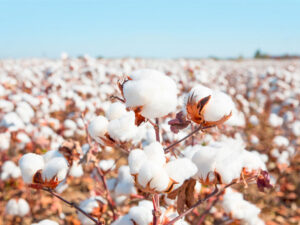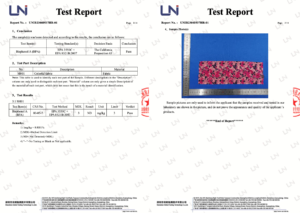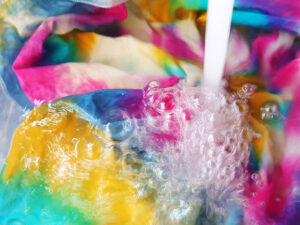
There are several forms of spandex elastic fiber yarn?
Spandex elastic fiber is mixed with other fibers to form elastic yarn, and its yarn form currently has three forms: spandex core-spun yarn, spandex twisted yarn and spandex covered yarn. The three forms of yarn have essential differences in processing principle and structural properties. Therefore, its use and weaving properties are also very different. The schematic diagram of the structure of the three yarns is shown in the figure.

02
The origin of spandex fiber and its main properties?
Spandex fiber is a kind of elastic fiber. Spandex fiber is collectively referred to as Spandex abroad. The trade name of our country is spandex. In fact, spandex is only a large category of elastic fiber. Polyurethane Fibre is referred to as PU fiber, there are two varieties, one is made of aromatic diisocyanate and polyester segment containing hydroxyl group inlaid copolymer, referred to as polyester spandex, the other variety is made of aromatic diisocyanate and containing Hydroxyl polyether segment mosaic copolymer, referred to as polyether spandex. The representative trade name of polyester spandex is Vyrent, and the representative trade name of polyether spandex is Lyera.
The main properties of spandex fiber are: usually more than 500% to 700% elongation, good elastic recovery performance. Retraction was 97% at 200% elongation and over 99% at 50% elongation.
The relative density of various spandex is relatively small, generally 1.20-1.25, the breaking strength is 4.41-8.82cN/tex (0.5-1.0g/denier), polyester spandex has lower strength, and polyether spandex has higher strength. The moisture absorption rate is generally 0.3%-1.2%. The moisture absorption rate of multifilament is slightly higher than that of monofilament. The heat resistance is generally stored at 95-150℃ for a short time without damaging the fiber. The safe ironing temperature is below 150℃.
The fibers burn slowly and form a gelatinous residue after burning. Excellent dyeing performance, can dye a variety of colors, strong affinity for dyes. It has good acid and alkali resistance, can be bleached, and is not moldy.
03
Spandex dyeing
Spandex can be dyed with disperse dyes and acid dyes, but the fastness of these two dyes is too poor, and experiments have shown that nylon with reactive dyes (dyed nylon elastic cloth) and disperse cationic dyes (dyed CDP elastic cloth) will not affect spandex. Basically non-staining, this is not to say that these two dyes are not suitable for spandex dyeing, in fact, under the premise of suitable auxiliaries as the medium, nylon can be dyed with reactive dyes, and the fastness and depth are comparable. excellent.
There are few pure spandex fabrics on the market, so spandex dyeing is relatively unfamiliar. The use of pure spandex fabrics with low-elasticity fabrics or non-elastic fabrics can increase the elasticity and resilience of the fabrics. And when the elastic fabric is stretched or molded, if the color of the spandex is inconsistent with the filament, there will be a problem of color leakage of the spandex, which requires the spandex to be dyed.
04
For Spandex Dyed Light Colors
It can be dyed with acid dyes or disperse dyes under the condition of acid bath. Under the same amount of dyes, the fastness of disperse dyes on spandex is better than that of acid dyes, but the fastness of different disperse dyes to spandex is different. Generally, the amount of dyes is less than 0.5% can be dyed with disperse dyes.
Spandex is a high-elastic fiber. Considering that long-term dyeing under high temperature conditions will cause spandex to lose its elasticity, it is generally dyed below 100 °C, and spandex is not alkali-resistant. Furthermore, disperse dyes and acid dyes are suitable for dyeing under acidic conditions. For dyeing under acidic bath conditions, pH around 5 is more suitable.
All kinds of dyes can dye spandex with suitable auxiliaries as a medium. This type of auxiliaries is called spandex colorant or spandex colorant in the market. It is mainly used for dyeing spandex with reactive dyes, acid dyes, etc. Zwitterionic properties.
The principle of action is roughly as follows: under acidic conditions, the amide bond and other groups in the spandex are ionized and positively charged, and the spandex colorant reacts with it, and the color-fixing agent is fixed on the spandex. ions, so the dye and spandex colorant can also be combined.
05
The rule of nylon reactive dyes for spandex dyeing (adding spandex coloring agent)
1. The general law of fastness after dyeing of spandex: washing>perspiration (acid)>water immersion, and the wet rubbing fastness is much better than the dry rubbing fastness. The reason is analyzed. After the spandex is colored, the dye or the spandex colorant and the dye combination will migrate under the external pressure for a long time under wet conditions, and it is a slow process (spandex is a hydrophobic fiber, water molecules It will not quickly enter the fiber, and the dye will not migrate quickly), so its washing fastness is good, and secondly, under the acidic conditions of perspiration, it is conducive to the ionization of the amide bond on the spandex spandex or the amino group on the spandex colorant, which can capture the migration of The dye or spandex colorant is combined with the dye, so the acid fastness to perspiration is better than the neutral water fastness. Under the action of friction, dry grinding will generate heat, resulting in thermal migration of the dye on the surface of the spandex, which does not happen under wet conditions.
2. Cooking soda ash after the spandex dyeing will reduce the fastness by about 0.5 grade. This is because under alkaline conditions, the combination of the spandex colorant with the fibers and dyes will be destroyed, thereby reducing the fastness. Secondly, after the spandex is dyed, use a cationic fixing agent to fix the color, and its fastness is improved more than an anionic fixing agent. The cationic fixing agent can react with the water-soluble group (-SO3-) generated by the dye to block the water-soluble group. The water solubility of the dye is reduced, and the fixing agent forms a film on the surface of the fiber, which can isolate the dye and improve the dry rubbing fastness accordingly.
3. The light fastness of acid, disperse and nylon dyed spandex with reactive dyes is worse than that of polyester or nylon filaments. The main reason is that the crystallinity of spandex is low, and it is in a high elastic state at room temperature. It is easier for air to enter the inside of the fiber, and the color changes under the action of sunlight. Furthermore, the spandex itself will turn yellow under the action of sunlight. Causes of low light fastness.
06
When cotton stretch cloth is dyed black
Spandex will be white, generally by adding a small amount of dispersion or acid black to the dye bath, so that it can be dyed with spandex, but pay attention to the fastness. Secondly, for the problem of dyeing black spandex with polyester elastic and nylon elastic fabrics, a small amount of spandex coloring agent can be added to the dye bath at about 0.3% when polyester elastic fabrics are dyed, and spandex coloring agent can be directly added to the dyeing bath when dyeing nylon elastic fabrics. Dyeing, so that the problem of spandex dew color can basically be solved. For other colors of spandex exposed color, it can be deduced according to the above analogy.
07
Why does denim spandex lose bullets?
The low-elasticity and high-elasticity silk materials of spandex core-spun yarn in denim fabrics are becoming more and more common, and the elasticity of spandex directly determines the progress of the denim washing process. In addition to its poor quality and easy loss of elasticity, spandex elastic yarn is also affected by many external factors.
1. Enzyme powder for the fermentation process
Since the enzyme powder is a multi-component compound, the difference in its internal chemical composition will affect the elastic loss of spandex, especially the anti-dyeing powder component. The enzyme powder used basically does not have this phenomenon.
2. Sodium hypochlorite (floating water)
Because spandex itself is not resistant to chlorine, the spandex elasticity is greatly damaged during the chlorine bleaching process, and the concentration of the bleaching water, pH and other reaction rates also have an important impact on the spandex elastic damage, and the heavy bleaching damage is large.
The following are some suggested solutions for mitigating elastic loss of spandex:
1. Run the denim garments that need chlorine bleaching in advance with 1-3g/L of spandex chlorine bleaching anti-brittle agent (1/10 of the bleaching water) in a water bath for 1-2 minutes, gradually raise the temperature to 40℃, add bleaching water three times, Add 1/5 of the total amount of bleaching water for the first time, add 2/5 of the total amount of bleaching water for the second time, and add the remaining 2/5 of the total amount of bleaching water for the last time, and operate according to the actual bleaching time.
2. After rinsing, the water temperature will gradually drop while draining and entering the water. The reason for this is to prevent the brittleness and loss of the spandex due to the sharp drop in temperature.
3. Soft
Due to the different formulations of softeners and silicone oils among various auxiliary manufacturers, some softeners and silicone oils may damage the elasticity of spandex, mainly due to a small amount of solvent in their components, which has an impact on the elasticity of spandex. However, some silicone oils and softeners basically do not contain this solvent, which has no effect on the elasticity of spandex. Choose the appropriate silicone oil for softening.
4. Solvent
Since the spandex weaving process contains silicone oil, the dyeing and finishing process needs to remove the oil, and many scouring agents contain solvents, which have a great impact on the elastic damage of spandex.
5, physical cutting
Because the characteristic of denim is nostalgic, many need to do physical damage, cutting treatment, the damage to the spandex elastic yarn uneven force, resulting in foaming of spandex, the exposed yarn is also easy to break, resulting in loss of elasticity.
6. Drying temperature
Generally, the drying temperature of denim fabrics containing spandex elastic yarn is lower than 60 ℃, so too high temperature will greatly damage the spandex elasticity.






